The True Traditional Dishes of Crete
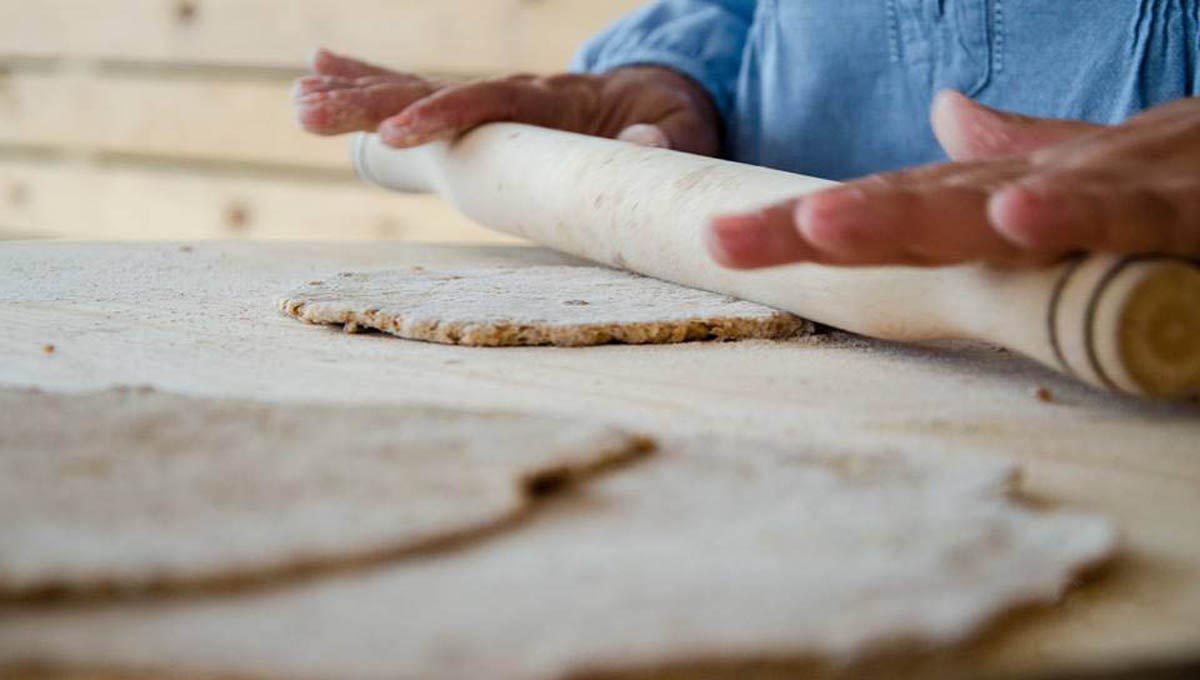
Which are the true traditional dishes of Crete? Where is the best place to eat these unique Cretan dishes? We can assure you that in this article, we will introduce you to the authentic Cretan Cuisine we enjoy in our Households and suggest to you the rare areas in Crete where you can try it!
The island is famous for its rich and delicious cuisine. The Cretan gastronomy hides a philosophy of life. It refers to the way of life of the Cretans, where food is a huge part of the culture. Furthermore, the Cretan diet is healthy and tasty, with recipes that reach our days from the depths of the centuries. Nonetheless, today with modern creative interventions, and with high-quality products, Cretan dishes are a unique experience on their own.
The inhabitants of Crete, over the years, have learned to honor their land that generously offers a huge variety of products, such as oil, wheat, wine, honey, herbs, and aromatic plants. These products are the basis for Cretan cuisine. In recent years, long-term scientific research proves their health properties and nutritional value.
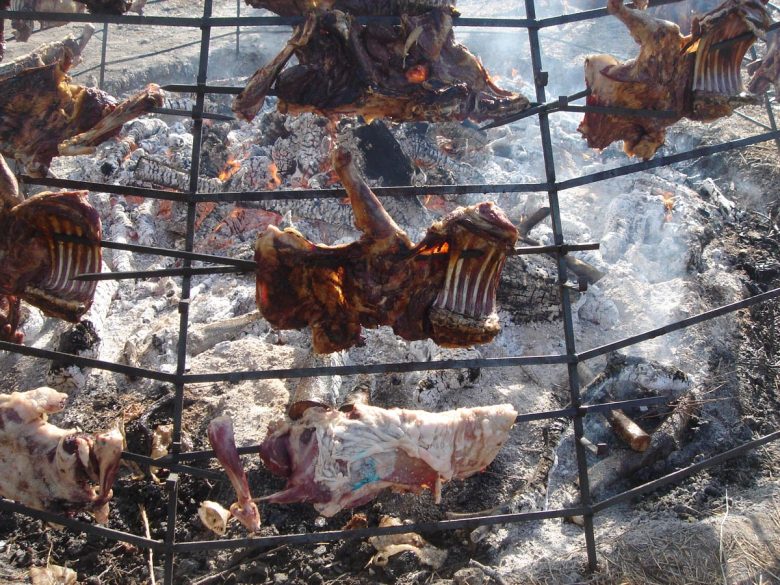
1. Antikristo – Traditional Cretan Meat Dish
Antikristo is the most famous Cretan lamb dish. The locals cut the animal into four pieces, add salt, and carefully pass the pieces of the meat onto a sharp stick. Then a pit is dug where a lot of wood is placed, to have plenty of fire. Afterward, they place the wood with the meat around the perimeter, always taking into account the intensity of the fire, the distance of the meat, and even the direction of the wind.
During the Turkish occupation, the meat was rarely cooked, as people feared being betrayed by the smoke of the fire. However, today the meat is simmered for 4-6 hours. From a nutritional point of view, antikristo is a healthy way of cooking. What makes antikristo particularly unique and healthy is the fact that the whole technique is such that it avoids the creation of carcinogens. More specifically, the meat is cooked on low heat and then on the coals that simmer. Moreover, the meat is at a distance from the hearth, so the fat does not drip on the fire and its proteins are not altered. Finally, the use of wood is an advantage, because the smoke produced is clearly “healthier” than that of industrial coals.
The traditional recipe does not include spices or marinating meat, due to the lack of such facilities in the countryside. Nevertheless, you can marinate the meat, as research indicates that it not only gives flavor to the meat but also builds a protective wall on its surface with the help of the antioxidants in the food we use for marinating. Therefore, we recommend using garlic, onion, turmeric, and wine for the marinade. The addition of oregano, rosemary, or thyme during cooking will help protect you from toxic substances and will surely satisfy your palate!
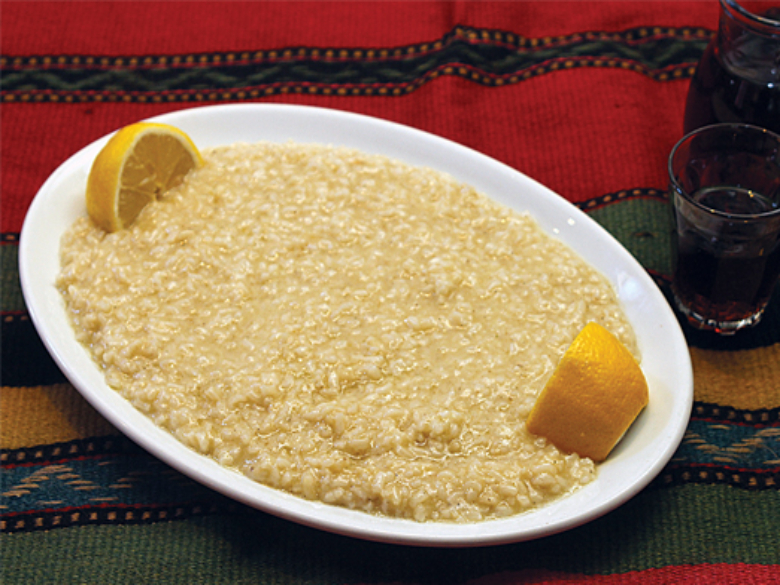
2. Gamopilafo – Traditional Cretan Pilaf
The traditional Cretan pilaf is served at weddings, engagements, and baptisms. Especially if you try it in a household of a Cretan village you will have a unique taste experience. The rice symbolizes the deep roots of marriage and, the couple’s fertility. The presence of rice at weddings is a custom since ancient times in Greece. The wedding pilaf was first cooked in Western Crete but over the years it became the most famous wedding dish on the entire island! According to tradition, the men prepared the pilaf, not the women.
Every Cretan family had a „gamopilafo specialist“ who was in charge of the dish at family weddings. The men of the family and their friends together with the chief „specialist“ brought from their houses very large pots where they boiled the meat and kept the broth. In Cretan weddings, there were always many types of meat. For example, goats, lambs, chickens, and roosters that were boiled for 4-6 hours. To this broth, they added lemon juice and boiled the rice over low heat. Then they put „stakobutter“, a butter formed on the surface of the freshly boiled goat’s milk. Buttermilk makes all the difference!
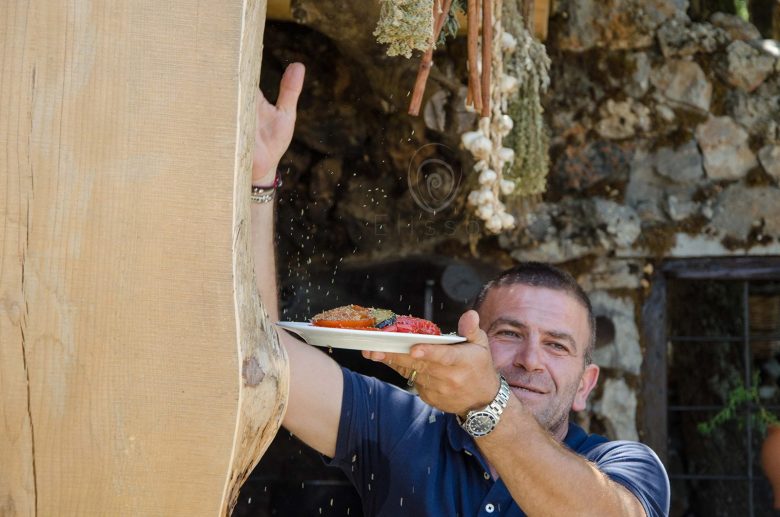
Experience: Lassithi Plateau & Diktaion Andron by Elissos Travelling Philosophy
The Lassithi Plateau & Diktaion Andron experience is ideal for those who want to taste traditional Cretan dishes. Apart from exploring the fertile Lassithi Plateau and the Cave of Dikation Andron, you will have the chance to lunch at a local house. There, you will taste traditional Cretan plates deriving from the mountainous regions of the island. The local cooks will prepare for you several dishes paired with their local wine.
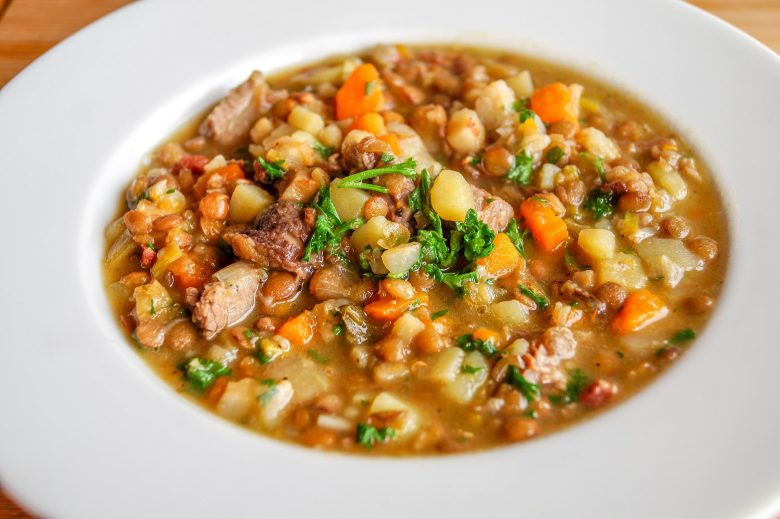
3. Legumes with Apaki – Traditional Cretan Soup
This dish can contain all the legumes you have in our fridge. This plate has its roots in antiquity. It is the continuation of ancient customs, wherein celebrations related to the fruition of the Earth people made such ritual offerings to the gods, especially to Demeter. This happened in both ancient Greek and Roman times. Today, in many villages of Eastern Crete, this food is common. It is a salad or soup of legumes and wheat that was made by the people of the countryside. They gave the same food to their animals.
The dish is served with dill or parsley and with plain oil vinegar or even with plain vinegar or lemon as a hot soup. Let us now turn to the evolution of the soup. We urge you to enrich the taste of the soup with slices of „apaki“. Apaki is smoked cured meat from lean pork, produced in Anogia, Crete.
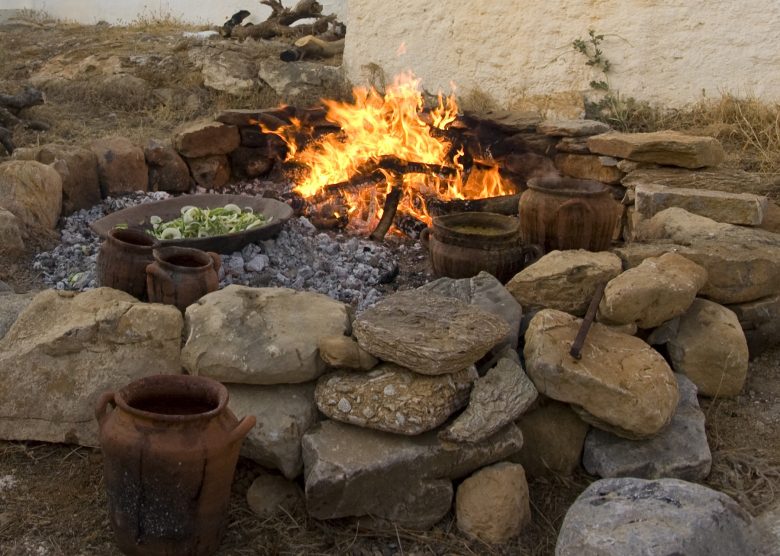
Experience: Minoan Tastes by the Beach by Elissos Travelling Philosophy
Minoan Tastes An experience focusing on Minoan flavors and Minoan-style cooking. Attend an introductory presentation of the Minoan cuisine around the hearth fire. An Archaeologist and Scholar of Minoan Cooking vessels will be teaching the class. For the rest of your culinary adventure, you will make Minoan-style lentils in ceramic pots and bake pita flavored with herbs or dried fruits. You will enjoy a 3-course meal by the fire with the tastes from the land and the sea. You will taste the high-quality ingredients in all the dishes and you will have a choice of either red or white wine to pair the dishes with.
Here are a few of the dishes that you will prepare, just to get an idea: Lentils flavored with herbs and honey, also topped off with olive oil. Pork simmered in wine and finished with either aromatic herbs and fruit or a savory seasonal sauce. Octopus or calamari simmered in wine with onions and tossed with olive oil and aromatic herbs.
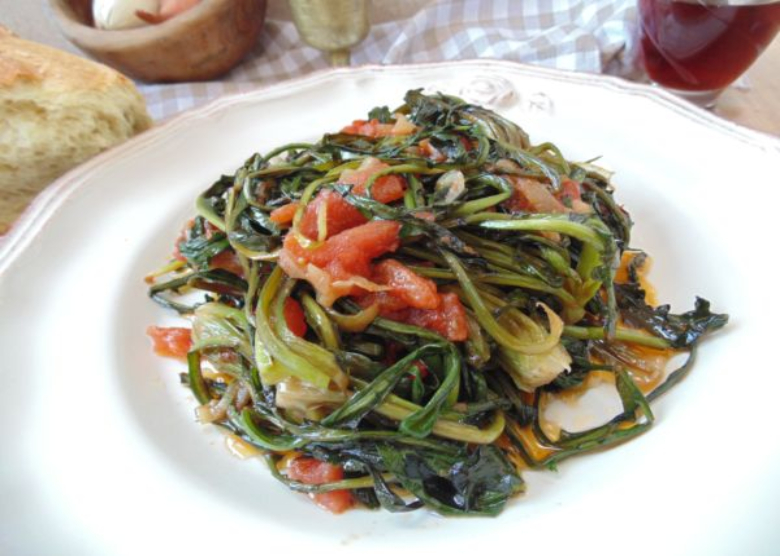
4. Stamnagkathi – Traditional Cretan Greens
Stamnagathi, Cichorium Spinosum was known by the Ancients as “Seris”. In Crete, it is called “Mavres” (black) due to its color. It is essentially a wild variety of radish that has a pleasant bitterness along with a slight sweetness, a trademark of Cretan cuisine. It has always been considered an enviable food that few were able to obtain. This is mainly due to the difficulty of harvesting as it grows in inaccessible places.
The most common ways it is served and consumed are the following:
- Raw: With a little olive oil (preferably extra virgin) and lemon or vinegar, is a first-class delicacy. If you want, you can add a little salt.
- Boiled: Boiled stamnagathi is a real delicacy for those who prefer boiled greens. With oil, lemon, and a little salt it becomes an excellent taste proposal.
- With Lamb or Pork: In Cretan cuisine, we can use stamnagathi like celery or spinach, to make our meat unique.
The traditional Cretan diet is rich in fruits and legumes. It is the best example of the Mediterranean diet for the prevention of cardiovascular diseases. Specifically, stamnagathi is rich in vitamins E and C, Omega-3 fats, and linoleic acid, the essential fat that expels fat that accumulates in the arteries. It also has a high concentration of calcium and iron.
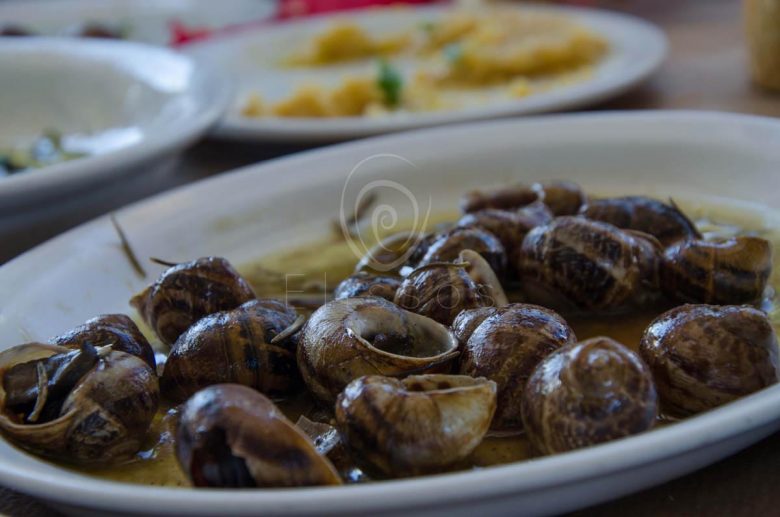
5. Snails with Groats – Traditional Cretan Delicacy
This traditional dish is the culmination of taste and nutritional value. The snail protein combined with the fiber and unprocessed carbohydrates contained in wheat is a first-class appetizer. Cretans cook the snails in many ways, depending on the region. The ground wheat, which in Crete we call groats, is none other than oatmeal, or pligouri, as it is called in other parts of Greece.
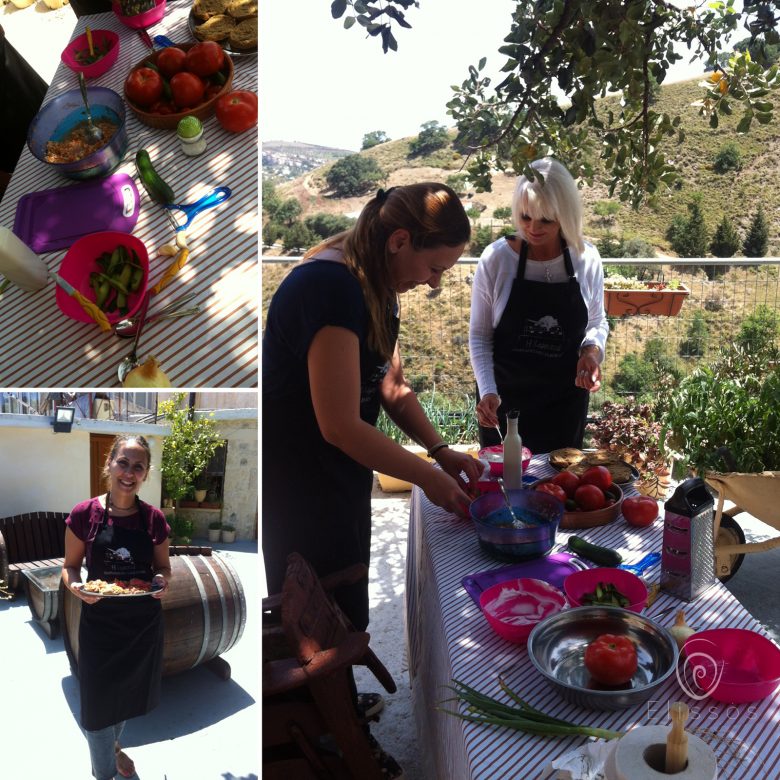
Experience: Be A Cretan For A Day by Elissos Travelling Philosophy
This Be A Cretan For A Day experience will let you dive into the authentic lives of the locals. You will visit a family and take part in all the cooking and farming activities. Become an active member of the family for the day and experience the Cretan lifestyle. Learn how to make your Cretan coffee and fresh bread in the wood oven. Cook delicious traditional dishes with ingredients that you will select from the garden. Taste all their local specialties such as wine and raki and just remember to enjoy yourselves!
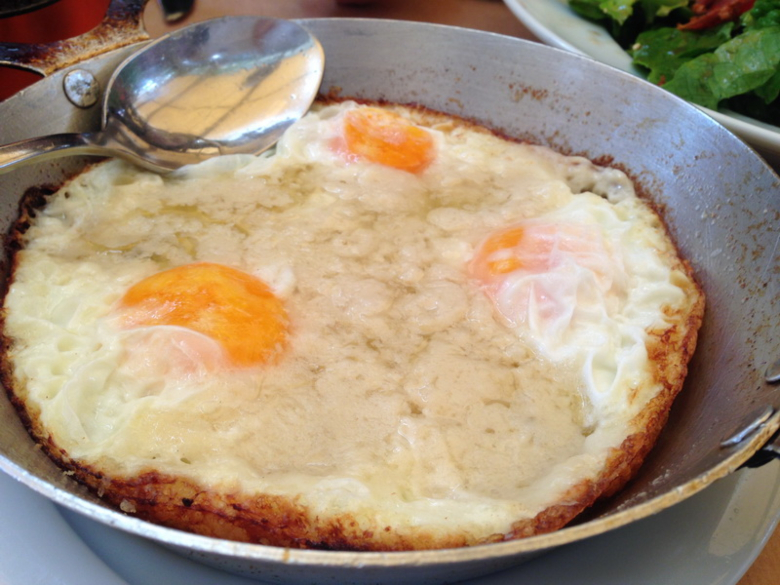
6. Staka with Eggs – Traditional Cretan Cheese
Staka is a dairy product between cheese and yogurt. After milking the sheep, they skim the cream (“tsipa”) from the milk and lightly salt it. When they have collected enough of the cream, they heat it for several days on extremely low heat, adding a small amount of flour. This is how proteins are separated from fat. The white and thick mass of proteins is the „staka‘ cheese and they store it in jars in the refrigerator so that it does not become sour. It has an off-white or pale-yellow color with a strong milk taste. It is cooked with eggs, spaghetti, pilaf, or in pies, while it is also consumed raw as a cheese salad.
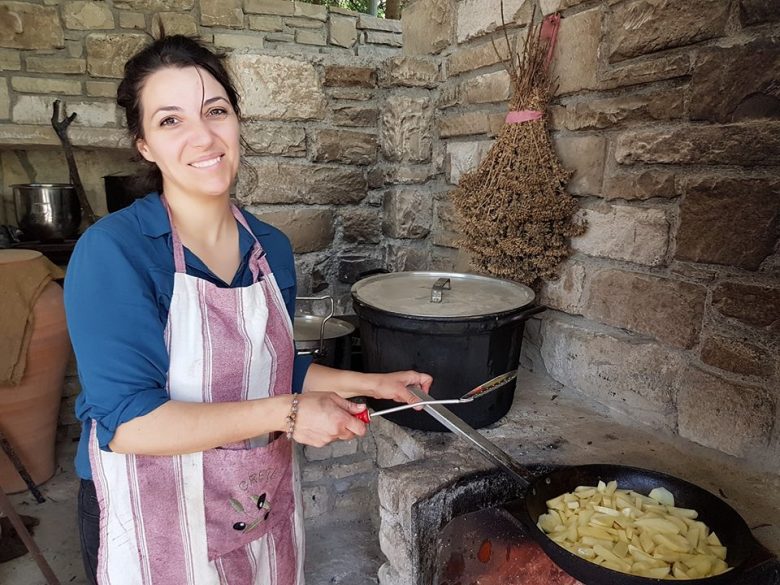
Experience: A Day In A Cretan Farm by Elissos Travelling Philosophy
We assume that you have guessed correctly! You will indeed be spending an entire Day at a Cretan Farm! There, you will have the opportunity to tend to the animals and learn about the traditions and lifestyle that are still alive today. In addition, you will also learn how to produce traditional Cretan “tyrozouli” cheese yourselves, from the farm goats’ fresh milk. Finally, you will prepare your traditional Cretan lunch using ingredients from the garden and farm.
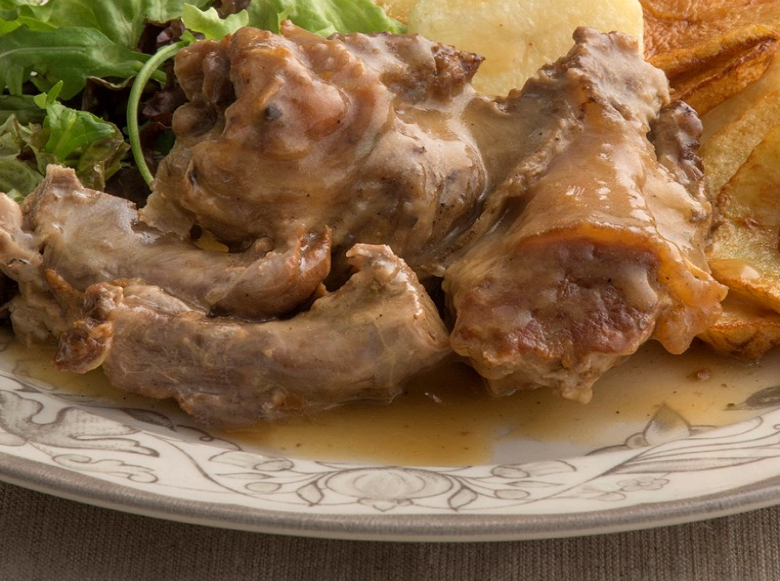
7. Tsigariasto – Traditional Cretan Meat Dish
With just three ingredients, the smoked lamb is also known as “Sfakiano Yachni” is one of the delicious dishes of Western Crete. Of course in its normal version, it is cooked with animals that feed freely on the plants in the mountains of Western Crete. This, as the locals say, makes the meat particularly tasty.
You can make it with either lamb or goat and accompany it with a green salad and baked potatoes. A nice tip to make the meat will melt into your mouth would be to add a little lemon and oregano. The same recipe can be made with pork, rabbit, but also with chicken or rooster.

Experience: Artistic and Spiritual Crete
This unique Artistic and Spiritual Experience will have you feeling relaxed yet emotionally energized. You will explore the sacred hill of Juktas where you will visit a plethora of Minoan ancient sites. Furthermore, you will also release your inner actor as you will learn about ancient Greek theater and perform in your own play. Finally, at the end of your day you will go to the neoclassical town of Archanes. There you will have lunch at a traditional taverna where you will taste all the famous Cretan delights! Enjoy the local wine, raki, and „meze“!
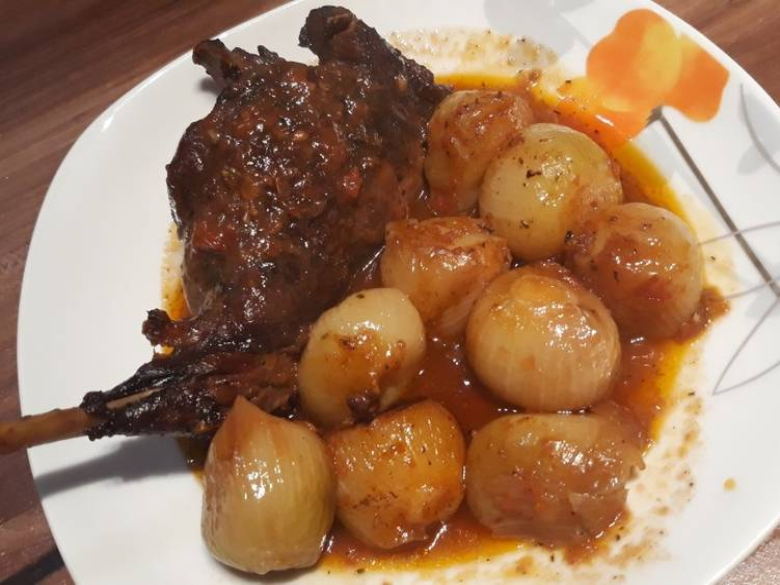
8. Hare Stifado – Traditional Cretan Meat Stew
Stifado is a classic winter food of the mountainous region of Crete. It is ideal with hare or wild boar, but it is often made with beef or rabbit. However, these meats do not have the same cooking behavior due to different physiology. The hare and the wild boar have room to cook until they soften and do not dry easily. The calf wants some care not to come out hard. The rabbit requires very delicate handling as it is completely lean and requires a little cooking so that it does not come out completely dry.
The classic, traditional stew recipe is simplistic in technique with the two basic ingredients, meat and onions being cooked together. But the times for each of them to reach the ideal cooking differ from each other. In addition, there is no gain in taste from their coexistence in the same pot. The result of this traditional practice is that most of the time the onions have reached the point of melting, not keeping their structure, because they are overcooked as they follow the times of the meat.
The characteristic of the stew is its aroma from the composition of basic spices such as cinnamon and, laurel with the garlic whispering in the background and all this being cooked in red wine. In some places, they even use sun-dried wine, as it gives extra sweetness to the specific food. However, for the sweetness in the final result, from a culinary point of view, take care of the chopped carrots and onions that create volume in the sauce.
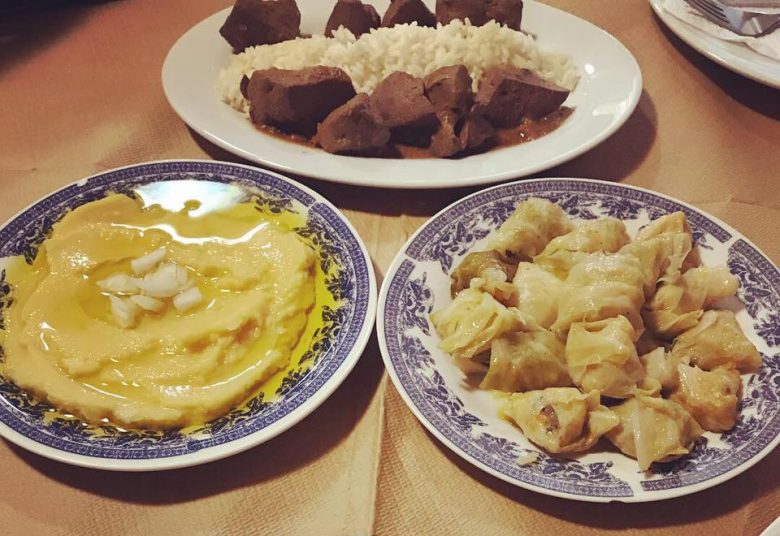
Experience: Rethymno for Nature Lovers by Elissos Travelling Philosophy
The Rethymno for Nature Lovers is an outdoor experience. The sites that you will visit are nature’s wonders such as the natural lake Kourna, which also has historical importance. The beautiful Patsos Gorge where you have the opportunity to hike and also visit a cave and a waterfall within the gorge. Afterward, you will lunch at a traditional settlement where they will offer you all the Cretan local specialties along with their finest locally produced wine. Finally, you will visit the extremely impressive Arkadi Monastery and learn it’s legendary story.
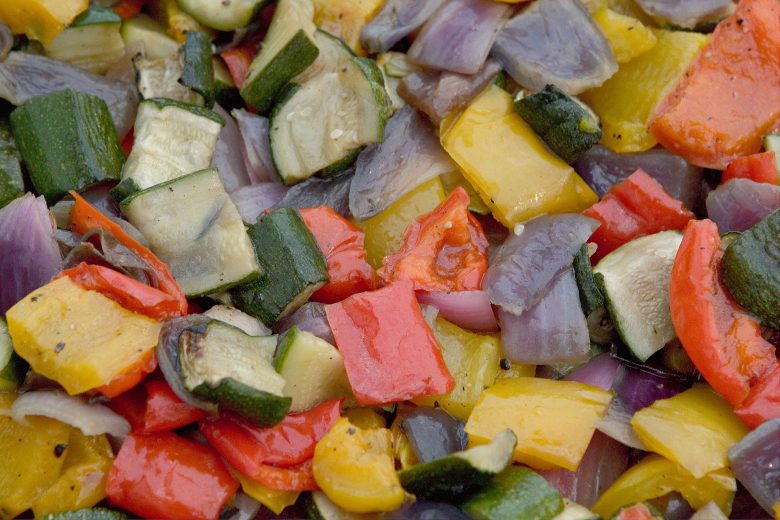
9. Briam – Traditional Cretan Oily Food
During the years when there were no grocery stores in Crete, each house had its garden. At the beginning of the harvest of the vegetables, not enough quantities came out, so that each vegetable could fill up a baking pan. Therefore, the housewives gathered a little of everything to fill a pan. Although very tasty, those years „briam“ was more of a forced choice.
The vegetables that are used all over Greece are tomatoes, potatoes, eggplants, peppers, zucchini, and onions. They are cut into approximately the same pieces, sometimes sautéed and sometimes not, put in the oven along with aromatic chopped dill, mint, parsley, or basil and of course a few cloves of garlic. In Crete, they add a handful of fresh beans and serve it with xynomyzithra cheese.
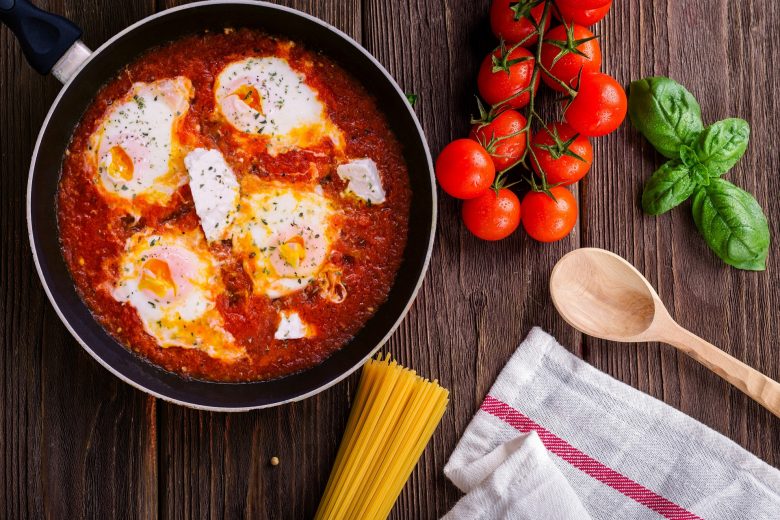
10. Strapatsada – Traditional Cretan Breakfast
Strapatsada is the name of the food made with tomato, feta cheese, and eggs. It is similar to the omelet, but in strapatsada the use of tomato and feta is typical. You will find it mainly in the Ionian Islands, the Peloponnese, and Crete where it is extremely popular in summer. In Crete they also call it “Kayanas”. It got its name from the Italian word strapazzare (un uovo) which means to beat (an egg).
It is a very simple and easy dish as the taste of the egg is not so strong. One could say that they are not „eggs with tomatoes“ but „tomatoes with eggs“. You can eat it for breakfast, or even for a snack at noon or in the evening!
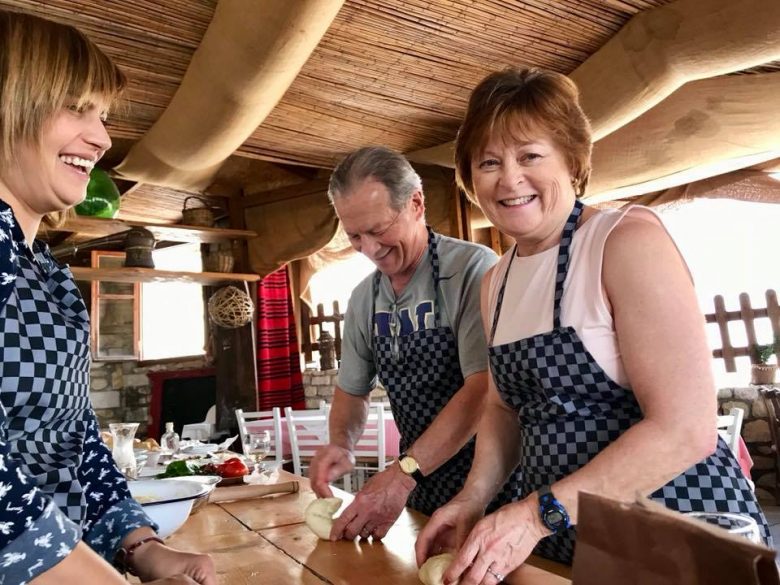
Experience: Rethymno For History Buffs & Foodies
The Rethymno for History Buffs & Foodies experience is the best combination for those who love history and food. Focusing on the monuments of the old town of Rethymno as well as visiting a traditional Cretan village south of Rethymno, in a few hours you will grasp the history and the traditions of the land. End this day with a fun cooking class, where you will learn the secrets of Cretan cuisine and you will enjoy a 3-course meal!
In case you have many different interests and would like to combine them all, you may Create Your Own Experience!
We look forward to hosting you as our Guests!
